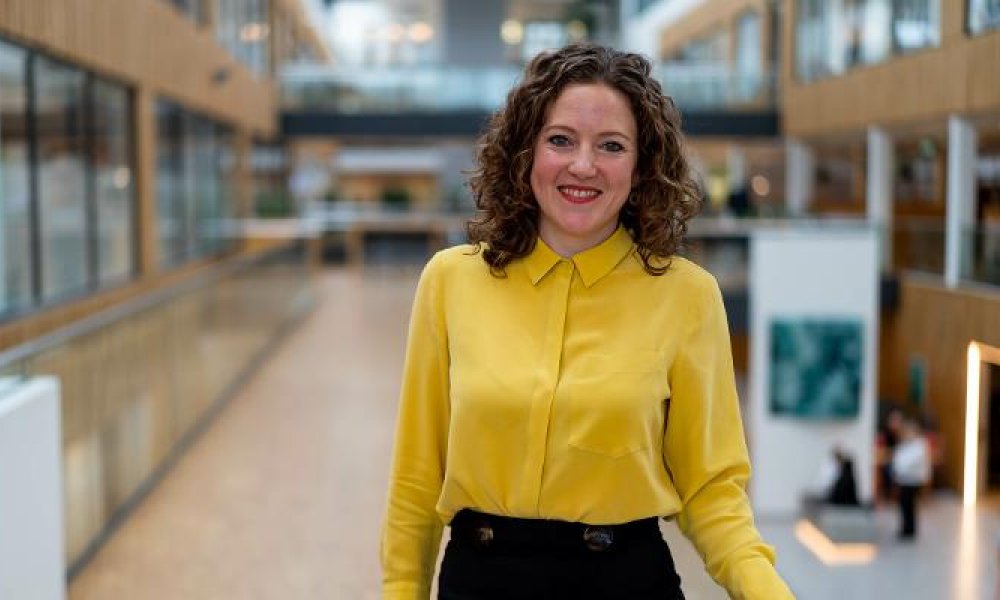Lauren Juliff has been in the asset management industry for more than twenty years and knows well the sector's sustainability journey. Here is a glimpse of her thinking on the role of trust in moving the sector towards a more effective sustainability stance.
What is the role of trust in what you do?
– When we talk about the role of trust in my work, we are actually talking about many layers of trust operating between different people and institutions. For starters, when a client invests with Storebrand, they place their trust in us. But then, most clients I work with are large public pension funds, and they have many underlying beneficiaries who placed their trust in these institutions. So, it permeates right along the investment chain; there is the trust between Storebrand and the fund, and then trust between the fund and its beneficiaries.
For me, the trust is built and maintained by the way we communicate our products. We need to demonstrate integrity in the design of our products and then be transparent about our thinking, even when it is difficult to do so due to the complex nature of topics such as climate change. Otherwise, there can be miscommunications and misunderstandings about where we stand regarding sustainability. And I think this is what is happening at large in our industry; greenwashing is an issue of trust more than anything.
Has it ever been difficult to relay your thinking behind a product?
– Yes, especially when we are dealing with regulation that does not appreciate the complexities of climate change mitigation. For example, the new EU regulations require decarbonisation at a specified rate of 7% per annum. The theory behind the regulation is reasonable as this rate stems from an IPCC determined pathway aligned with 1.5C of warming with low or no overshoot, but in practice we find it is too rigid and inflexible to deliver a truly transition-oriented portfolio.
To transition our economies in a Paris-aligned manner, we need a huge growth in climate solutions technologies such as heat pumps, EV parts, and electricity grid cables. These are vital in electrifying our economies; incidentally, they also currently report high Scope 1-3 emissions, because they are embedded into a fossil-based grid. However, if we choose to take the regulation at its face value, we will need to drop these important sectors from our portfolio.
So, we keep them in our portfolio to give our clients what we believe to be a better opportunity of aligning their portfolios with the goals of the Paris agreement. It might be difficult to explain this to clients who are mainly concerned with compliance at face value, but if we can effectively communicate our approach to the market through our research papers and case study examples, and if we can help our clients communicate this to their beneficiaries in a straightforward way then we believe we can deliver better investment outcomes than so called "passive" climate index trackers.
How do you communicate these so-called counterintuitive positions? What kind of resources do you rely on when making your case?
– We think that expert oversight of portfolio construction based on an understanding of climate science, policy and the limitations with datasets is crucial for managing climate risk. The institutional scenarios used across our industry, and the resulting investment strategies, often appear to understate the risks presented by climate change or lack a focus on economy transition. Over the past few years, we have used scientific research and international policy documents in our research and communications to illustrate why we cannot rely on offsets such as carbon capture, why our portfolio is fossil free, why Paris alignment is more complex than following a decarbonisation trajectory and why we seek broad diversified exposure to a range of climate solution technologies. But alongside keeping on top of developments in climate science and policy, it is important that we have an appreciation of our clients' needs and the changing regulatory environment they must operate in.
Does internal collaboration play a role in this?
Yes, this is why I think Henrik Wold Nilsen from the Oslo office and I make a good team. We both have a passion for climate science, Henrik has many years' experience in portfolio construction and data analysis, while I have many years' experience working directly with pension funds and a good understanding of asset owner requirements. So Henrik mostly designs our products and works with data on a day-to-day basis to adjust the portfolio while I do a lot of research on market developments, forthcoming investor regulations and climate data and reporting. We also write research papers together that cover that breadth of topics, using specific portfolio examples. One of our most recent collaborative work has been the white paper titled "Paris Alignment Paradox."
What is inspiring and exciting you these days?
We are getting ready to write another white paper, this time on the issue of Paris-aligned investing in emerging markets. The Paris Agreement states that countries should have "common but differentiated responsibilities" in addressing climate change. However, in the regulatory space and in financial sector application, we think this equitable mitigation principle is often missing. This can also result in the exclusion of companies in emerging markets which might, again, be vital to climate change mitigation, and we want to draw attention to this shortcoming in Paris-aligned benchmark thinking.
I am also excited about the summer break and spending time with my family, hiking in the mountains, swimming in lakes, and trying our best to minimise our emissions by taking a train to Switzerland then a bus and ferry to Italy. We also recently took our kids to Latitude Festival in the UK, which was a brilliant mix of live music, comedy, and an inspiring Climate Bus!







